Link Building for SEO: Comprehensive Guide to Boost Your Website’s Rankings and Traffic!
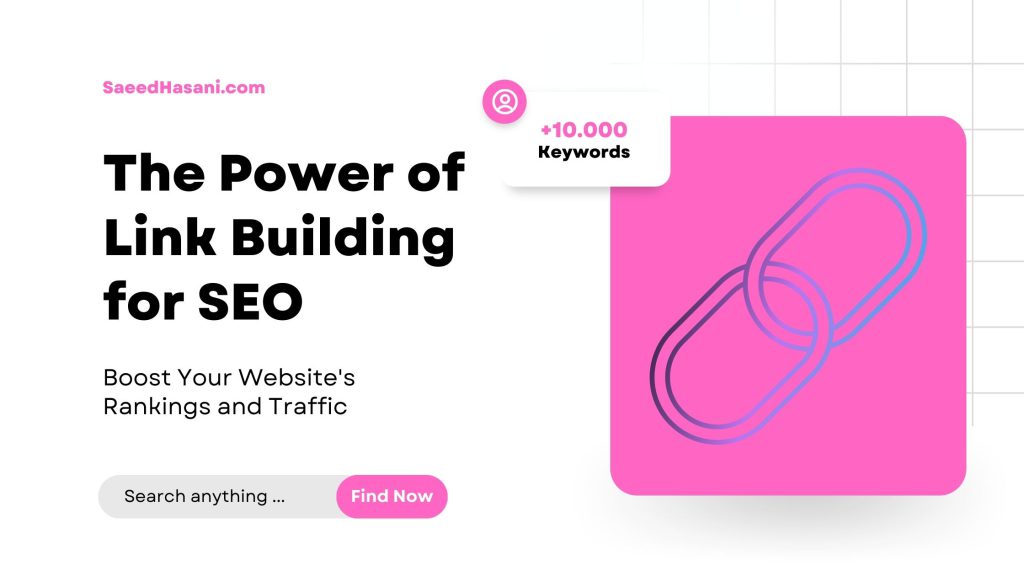
Link building, the practice of increasing the quality and quantity of inbound links, is an art and critical to SEO success.
A vast and varied link profile brings the best Search Engine Results Page (SERP) ranks.
Link building often works best with a holistic strategy, from low-value discussion-type links to high-value directory-type links.
Effective link building strategies include manual outreach, self-created non-editorial, and editorial link building .
Link building was found to be the most effective SEO strategy for increasing traffic, domain authority, SERP rank, and ad revenue.
Content Overview:
What Is Link Building in SEO?
Link building in SEO is like making friends on the internet! It’s a process where you get other websites to link back to your website. These links, often called backlinks, act like votes of confidence from one site to another.
When a reputable site links to your content, search engines see this as a sign that your site is trustworthy and valuable, which can boost your rankings in search results.
Here’s a simple way to think about it: imagine the internet as a big, crowded party. Your website is you, trying to get noticed. If you have a lot of friends (backlinks) who vouch for you, people (search engines) are more likely to see you as popular and worth talking to.
The ultimate goal of link building is to increase your website’s authority and visibility in search engines, driving more organic traffic. But remember, quality matters more than quantity. A few links from high-authority sites can be far more beneficial than many links from low-quality sites.
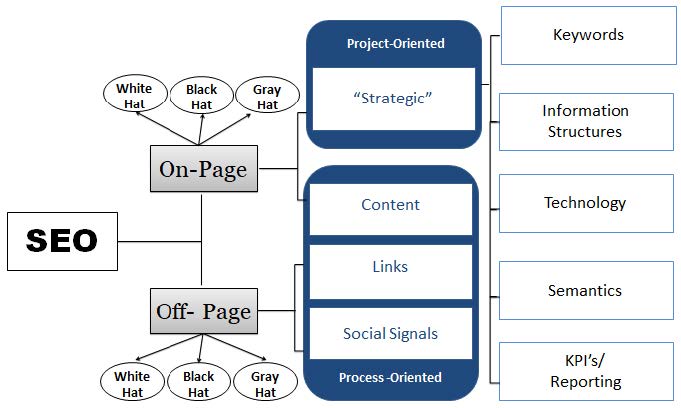
Is Link Building Dead?
In the past, link building often involved pursuing quantity over quality, leading to spammy and manipulative practices that search engines like Google have cracked down on.
Google’s algorithm updates, such as Penguin, have become more sophisticated in detecting and penalizing websites engaged in link schemes or artificial Link building tactics. These updates have put an emphasis on the importance of high-quality, natural, and relevant links.
While traditional Link building methods like spammy directory submissions, link exchanges, and purchased links are indeed less effective and can even be harmful now, earning genuine, organic links through high-quality content, outreach, and building relationships with other websites in your niche is still a valuable strategy.
The focus has shifted to providing valuable content that naturally attracts links from other websites and users. This approach, known as “earned” or “white-hat” link building, is considered the best practice.
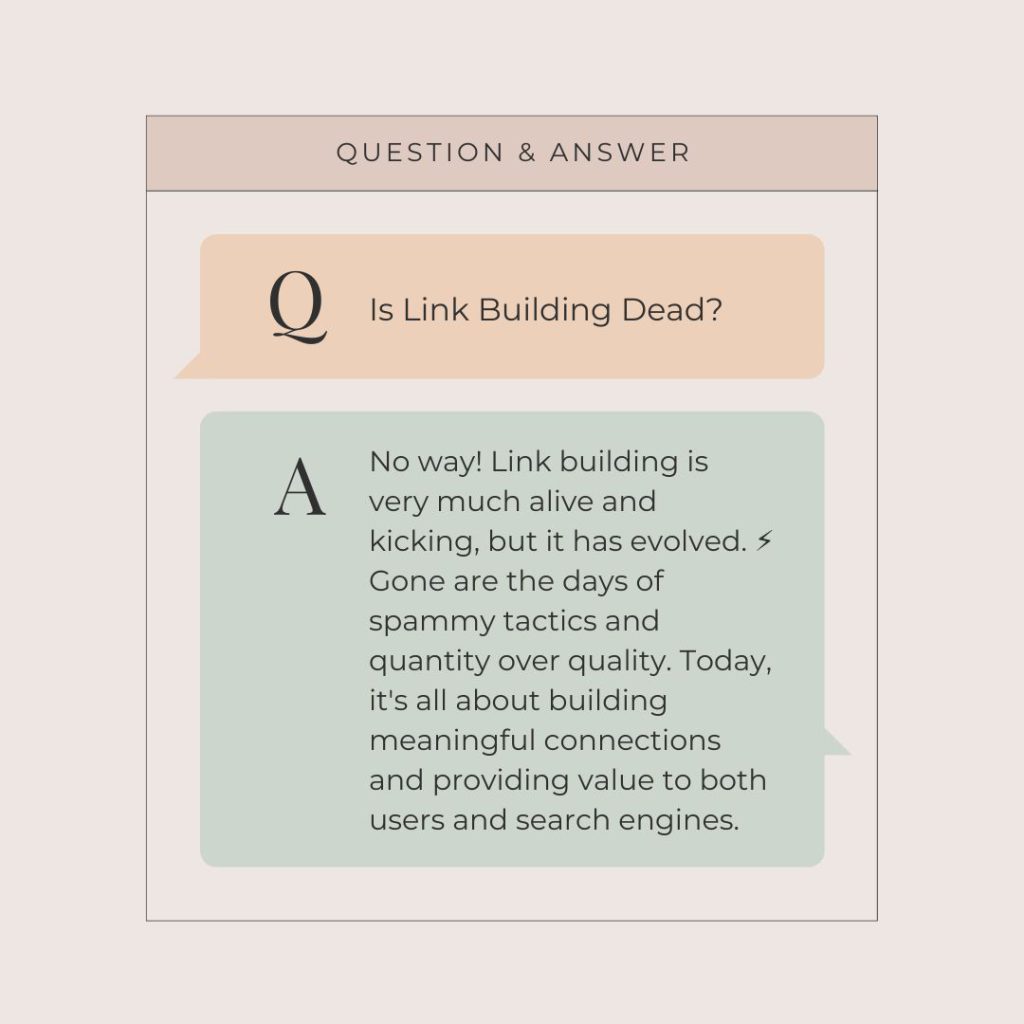
How much does Link Building Cost?
The cost of link building can vary widely depending on several factors. There’s no one-size-fits-all answer to this question, as different businesses have different needs and goals. Some factors that can influence the cost of link building include:
- Type of Link Building: The cost can vary based on the type of link building you pursue. For example, guest posting on high-authority websites may require payment to the site owner or content creators, while acquiring links through content marketing or outreach may have different cost structures.
- Quality and Authority of Websites: Acquiring links from more authoritative and reputable websites usually comes at a higher cost than obtaining links from lesser-known sites.
- Quantity of Links: The number of links you want to acquire will impact the cost. A large-scale link building campaign may require a bigger investment compared to a smaller, targeted effort.
- In-House vs. Agency: If you choose to handle link building in-house, the cost might primarily be the team members’ salaries. On the other hand, outsourcing to an agency or hiring a freelance link builder will come with their own pricing models.
- Link Building Approach: Ethical, white-hat link building techniques often require more time and effort, but they can provide sustainable results. Some unethical, black-hat practices might seem cheaper in the short term, but they can lead to severe penalties from search engines.
- Industry and Niche: The competitiveness of your industry and niche can also impact the cost. In more competitive fields, link building might require more resources and investment to stand out.
As a ballpark figure, link building services or campaigns can range from a few hundred dollars for smaller, one-off tasks to several thousand dollars per month for ongoing, comprehensive campaigns.
However, keep in mind that the quality and effectiveness of the link building efforts are more important than just the cost.
Always prioritize quality, ethical link building practices that focus on providing value to users and building strong relationships with other websites. Investing in a reputable and experienced link building service or expert can often yield better long-term results for your website’s SEO and organic growth.
What Affects a Backlink’s Value?
A backlink’s value can vary quite a bit, and there are several factors that influence how much it helps your website’s SEO. Here’s a quick rundown of what makes some backlinks more valuable than others:
- Domain Authority: Think of domain authority as the overall popularity and trustworthiness of a website. Links from high-authority sites (like established news outlets or popular blogs) are more valuable because they pass on more credibility to your site.
- Relevance: If the site linking to you is related to your industry or topic, that backlink is more valuable. For example, a link from a tech blog to your tech startup’s website is more impactful than a link from a random cooking blog.
- Anchor Text: This is the clickable text of the link. If it includes relevant keywords related to your site, it’s more valuable. For instance, if your site is about SEO tips and the link’s anchor text is “SEO best practices,” that’s a win.
- Link Placement: Where the link appears on the page matters. Links within the main content are generally more valuable than those in the footer or sidebar. Search engines assume that links in the main content are more likely to be genuine recommendations.
- Link Type: There are different types of links, such as dofollow and nofollow. Dofollow links pass on SEO value, while nofollow links don’t directly influence your rankings. However, nofollow links can still drive traffic and have indirect SEO benefits.
- Link Freshness: Newer links can sometimes be more valuable as they indicate current relevance. However, older, consistent links from reputable sites also hold significant value over time.
- Traffic: Links from pages that get a lot of traffic can be more beneficial because they can drive visitors directly to your site, increasing exposure and potential engagement.
- Diversity of Linking Domains: It’s better to have links from a variety of different websites rather than multiple links from the same site. This shows search engines that your content is recognized and valued by various sources.
Not all backlinks are created equal. Quality, relevance, and context are key. A few high-quality, relevant backlinks can significantly boost your SEO, while a bunch of low-quality links might not do much at all.
Link Building Pillars: How to Build Links?
Let’s break down these key pillars of link building and how you can effectively build links:
Adding Links:
- This involves manually placing your link on another website, typically in a comment, forum, or directory.
- How to Do It: Find relevant directories or community forums related to your industry. Engage genuinely in discussions, and only add your link where it naturally fits and adds value.
- Tip: Avoid spammy practices. Ensure that your link provides real value to the conversation or context in which it’s placed.
Asking for Links:
- This is about reaching out to website owners or bloggers and requesting that they link to your content.
- How to Do It: Identify relevant websites and contact their owners via email. Explain why your content is valuable to their audience and how it complements their site.
- Tip: Personalize your outreach emails. Show that you’ve done your homework by mentioning specific articles you enjoyed or how your content can benefit their readers.
Buying Links:
- This involves offering compensation in exchange for a backlink.
- How to Do It: Approach websites that allow sponsored posts or paid links. Negotiate terms that benefit both parties.
- Tip: Be cautious with this method, as buying links can violate search engine guidelines and potentially lead to penalties if not done carefully and transparently.
Earning Links:
- This refers to creating high-quality, valuable content that others naturally want to link to.
- How to Do It: Focus on producing exceptional content—such as comprehensive guides, insightful research, entertaining videos, or useful tools—that stands out in your niche. Promote your content through social media, email newsletters, and collaborations.
- Tip: Consistently create content that addresses your audience’s needs and interests. Engage with your community and industry influencers to boost visibility and encourage organic links.
By focusing on these pillars, you can develop a balanced and effective link-building strategy. Here’s a quick recap:
- Adding Links: Engage in relevant communities and directories.
- Asking for Links: Reach out with personalized requests to relevant sites.
- Buying Links: Proceed with caution and transparency if you opt for this method.
- Earning Links: Create exceptional content that naturally attracts links.
Remember, the goal is to build a diverse, high-quality backlink profile that boosts your site’s authority and search engine rankings.
External Link Building Strategy
External link building is a crucial aspect of SEO that can help your website gain more visibility and authority in search engines. Here’s a casual breakdown of an effective external Link building strategy:
- Research Your Niche: Start by understanding your target audience and niche. Identify the websites and blogs that are relevant to your industry, products, or services.
- Create Link-Worthy Content: Develop high-quality, valuable content that others would want to link to. It could be in the form of informative blog posts, data-driven infographics, helpful guides, or engaging videos.
- Competitor Analysis: Look at your competitors’ backlink profiles to identify potential link opportunities. Tools like Ahrefs or Moz can be handy for this.
- Outreach and Relationship Building: Reach out to website owners, bloggers, and influencers in your niche. Personalize your outreach emails and offer them your valuable content as a resource.
- Guest Posting: Pitch guest posts ideas to relevant websites. Write informative and engaging articles that showcase your expertise and link back to your website.
- Broken Link Building: Find broken links on other websites that could be replaced with your content. Reach out to the site owner and suggest your link as a suitable replacement.
- Testimonials and Reviews: Provide testimonials or reviews for products/services you’ve used. Many businesses link back to the testimonials they receive.
- Directories and Local Citations: Submit your website to reputable directories and local citation sites related to your industry or location.
- Social Media Promotion: Share your content on social media platforms to increase its visibility and potentially attract more backlinks.
- Monitor and Analyze: Keep track of your Link building efforts. Monitor new backlinks, and analyze their quality and impact on your website’s performance.
Remember, external link building should focus on acquiring high-quality, relevant, and natural backlinks. Avoid engaging in link schemes or black-hat practices, as they can lead to penalties from search engines.
Patience and persistence are essential in link building as it takes time to build meaningful connections and earn valuable links. Stay consistent and continuously refine your strategy for better results over time. Happy link building!
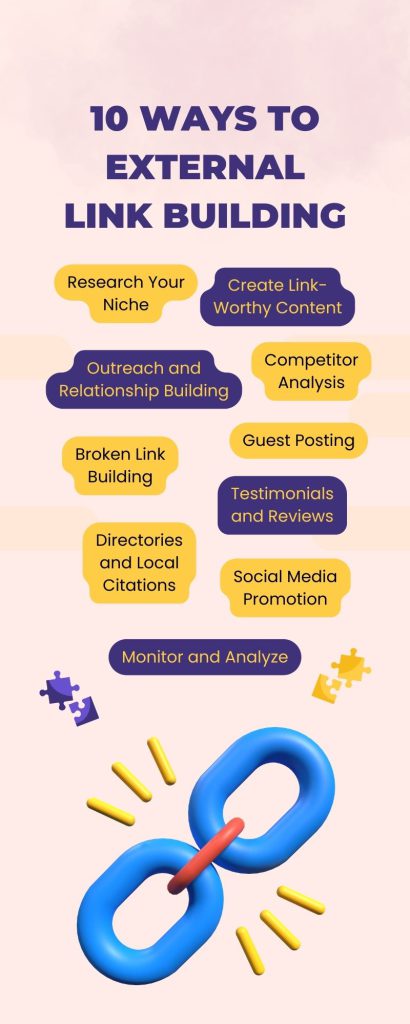
Link Building Techniques
Link building is an essential part of SEO that involves acquiring hyperlinks from other websites to your own. These links not only drive traffic but also enhance your website’s authority and credibility in the eyes of search engines like Google. Here are some link building techniques with examples:
1. Interactive Content Collaboration:
Create interactive and engaging content, such as quizzes, calculators, or interactive maps, that offer value to your target audience. Reach out to websites in your niche and propose a collaboration where they embed your interactive content on their site, with a link back to your website.
Example: If you have a finance website, develop an “Investment Risk Quiz” that helps users assess their risk tolerance. Pitch the idea to finance blogs for embedding, along with a link to your site.
2. Infographics Outreach:
Create visually appealing infographics on topics relevant to your niche. Reach out to blogs or websites that might be interested in sharing your infographic, with a link back to your site as the source.
Example: If you have a cooking blog, design an infographic titled “The Ultimate Guide to Spices and Their Uses” and share it with food-related websites.
3. Social Media Link Building:
Identify influential social media personalities or micro-influencers in your industry. Engage with their content, share their posts, and build a genuine relationship. Eventually, propose a content collaboration where they share a link to your relevant blog post or resource on their social media profiles.
Example: If you run a beauty blog, connect with a skincare influencer known for sharing skincare tips. Build rapport by commenting on their posts, and later, propose a collaboration where they share your blog post about “10 Must-Try Summer Skincare Hacks” with their followers.
These link building techniques add a fresh twist to the traditional methods and can help you establish meaningful connections within your industry while building valuable backlinks to your website.
4. Skyscraper Technique:
Identify popular content in your niche and create something even more comprehensive and valuable. Reach out to websites that linked to the original content, suggesting they link to your improved version.
Example: If you have a digital marketing blog, create an in-depth guide titled “The Definitive Guide to Social Media Marketing” and reach out to websites that are linked to similar but less comprehensive guides.
5. Resource Page Link Building:
Search for resource pages in your industry that list helpful websites, tools, or articles. Reach out to the page owner, suggesting your website as a valuable addition.
Example: If you have a web design agency, reach out to a web development resource page with a request to include your agency’s link under the “Recommended Design Agencies” section.
6. Mention Monitoring:
Use tools to monitor when your brand or relevant keywords are mentioned online without a link. Politely reach out to the author or website owner, asking if they could add a link to your site for reference.
Example: If your company sells eco-friendly products, and a sustainability blog mentions your products without linking, send them a friendly message suggesting they link to your site for readers to learn more.
Remember, while these techniques can be effective, link building should always be approached ethically and genuinely. The goal is to provide value to your audience and the websites you’re interacting with. Building relationships within your industry can lead to more natural link opportunities over time.
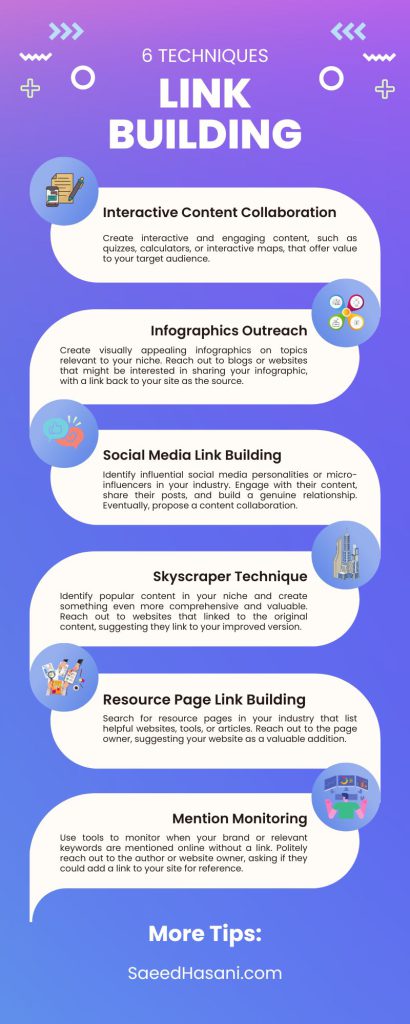
How to Track Your Link Building Efforts?
Tracking your link building efforts is essential to see what’s working and where you need to tweak your strategy. Here’s a guide on how to keep tabs on your progress:
1. Use Google Search Console
Google Search Console is your free, go-to tool for tracking backlinks.
- How to Use It: Log in to your account and navigate to the “Links” section. Here, you’ll see who’s linking to your site, the most linked content, and the anchor text used.
- Tip: Check this regularly to spot new links and ensure there are no spammy or harmful links affecting your site.
2. Leverage SEO Tools
Tools like Ahrefs, SEMrush, and Moz are fantastic for in-depth link tracking.
- How to Use Them: These tools offer detailed reports on your backlinks, including the quality of the links, domain authority, and link growth over time. Set up alerts to get notified of new backlinks.
- Tip: Most of these tools offer a free trial. Take advantage of it to see which one suits your needs best before committing.
3. Monitor Referral Traffic
Google Analytics can show you how much traffic is coming from your backlinks.
- How to Use It: Go to the “Acquisition” section and then “All Traffic.” Click on “Referrals” to see which backlinks are driving traffic to your site.
- Tip: Pay attention to the behavior of visitors from these links. High engagement can indicate quality traffic.
4. Track Your Rankings
Keep an eye on your keyword rankings to see how your link building efforts are paying off.
- How to Do It: Use an SEO tool or a keyword ranking tracker. Monitor the positions of your target keywords regularly.
- Tip: Correlate any significant ranking jumps with recent link-building campaigns to identify what’s working.
5. Create a Link Building Spreadsheet
Old school but effective, a spreadsheet can help you track your outreach and acquired links.
- How to Do It: Create columns for the date of outreach, the site contacted, the URL where the link should appear, the status (e.g., contacted, link acquired), and any follow-up actions.
- Tip: This is especially useful for keeping your link building organized and ensuring no opportunities slip through the cracks.
6. Set Goals and KPIs
Define what success looks like for your link building.
- How to Do It: Set specific, measurable goals such as the number of new backlinks per month, improvement in domain authority, or increased referral traffic.
- Tip: Review these goals regularly and adjust your strategies based on your progress.
7. Conduct Regular Link Audits
Periodically review your entire backlink profile to ensure it’s healthy.
- How to Do It: Use tools like Ahrefs or SEMrush to audit your backlinks. Look for toxic or spammy links that could harm your site and disavow them if necessary.
- Tip: Regular audits help you maintain a clean backlink profile and avoid any negative SEO impacts.
By using these methods, you can effectively track your Link building efforts and see the fruits of your labor. Remember, link building is a marathon, not a sprint, so keep at it and adjust your strategies as needed for continuous improvement.
Conclusion
In conclusion, link building is a crucial aspect of SEO that involves earning backlinks to enhance your website’s authority and visibility. By focusing on quality over quantity, you can build a strong backlink profile that boosts your search engine rankings and drives more organic traffic.
Remember, successful link building requires patience, persistence, and a commitment to creating valuable content that naturally attracts links.
Sources:



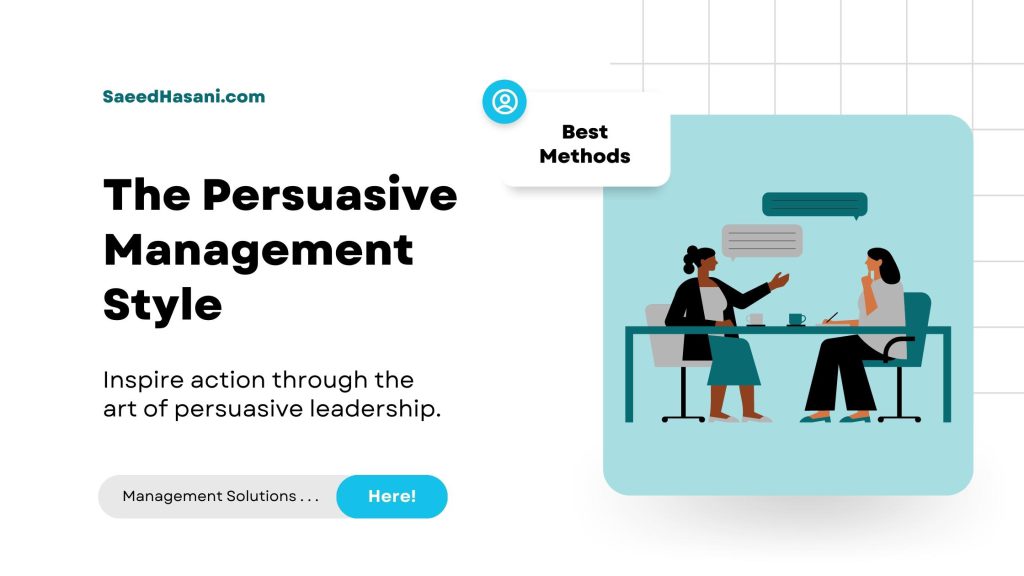



Responses